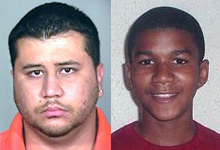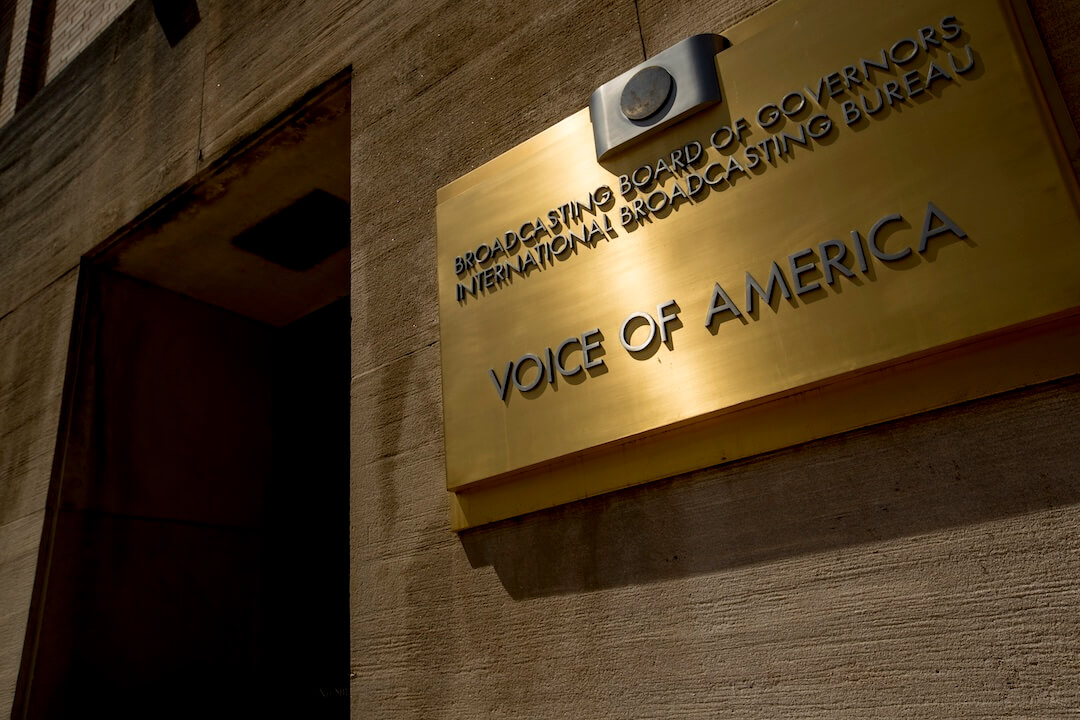Since the shooting of Trayvon Martin became national news, two photos have come to define the emotionally and racially charged narrative.
News organizations initially had just a few photos of Martin to choose from, and just one of George Zimmerman, the neighborhood watchman who shot and killed him. More recent photos have emerged lately, but a month after the shooting, the narrative already has been established.
-

- This is the most recognized image of Trayvon Martin, although it’s several years old. (Associated Press)
“The challenge we have is a lot of folks are getting a very surface view from the photos,” said Orlando Sentinel photo editor Tom Burton. “Photos can be used to get people emotionally involved and we need to be careful. It’s a concern if we had more of a choice, but we are limited by availability.”
The dominant photo of Martin shows him 13 or 14 years old, wearing a red Hollister T-shirt. Other photos, none of them recent, depict a young Martin in a youth football uniform, holding a baby and posing with a snowboard. He is the picture of innocence.
The most common photo of Zimmerman is a 2005 police mugshot. He is 22 in the photo, which was taken after he was arrested for assaulting an officer. (The charges were dropped.) He looks unhappy, if not angry.
-

- This mugshot has become the dominant image of George Zimmerman. It, too, is several years old. (Associated Press)
The contrast — the two photos are often published side by side — has led to criticism that news media have tilted the story in favor of the 17-year-old victim and against the 28-year-old man who shot him.
“The images used are clearly prejudicial to both men,” said Kenny Irby, Poynter’s senior faculty for visual journalism and diversity. “If those are the repeating images, then we continually reinforce prejudice and negative emotions. We never get to appreciate the life experience or further context of either individual.”
Although more recent photos are now available, there are legal and contextual arguments against using them.
Can news outlets use photo of Zimmerman in a tie?
Take the newest Zimmerman photo. Last Friday, Orlando Sentinel reporter Jeff Weiner got a photo from Zimmerman’s last employer. In this one, he is smiling and wears a tie and jacket.
-

- This more recent photo of Zimmerman has not been used as widely as the mugshot, in part due to copyright issues. (Orlando Sentinel)
The Sentinel obtained the photo through an unnamed source, but the paper hasn’t given anyone else permission to use it. It has, however, made the photo available to clients of McClatchy-Tribune Information Services.
“We got it from a source and published under fair use,” said the Sentinel’s Burton. “We are not selling it because we don’t own it. If someone takes it from our website, we are not going to pursue them.”
Staff at The Miami Herald saw the photo of Zimmerman in the tie and wanted to run it with a profile last Sunday.
“When one sees a solitary mugshot of Zimmerman …, with a negative expression on his face, that kind of photo can influence the story,” said Herald photo editor Roman Lyskowski. “You look at it and say, ‘A booking mug. Yes, of course, he’s guilty.’ “
Yet the Herald had to run the old booking photo on Sunday. Only the Sentinel knew where the newer one had come from, and it wouldn’t grant permission to publish the image.
“The risk in using that photo is that the owner of the copyright has not consented to your use and can sue you for copyright infringement,” said Andy Sellars of Harvard’s Berkman Center for Internet & Society. “You could raise fair use, but then a judge has to decide the case. … The more you need the photo to tell what you need to say, the more the photo is an essential part of the story and the stronger your case is.”
The Herald decided to use the photo later in the week after it had been distributed on the McClatchy-Tribune wire.
Irby believes the decimation of newsrooms, including photography departments, is one reason news outlets continue to run the same photo rather than pursue newer, more accurate ones.
“Picture editors and photographers are some of the biggest newsroom casualties” of budget cuts, he said. “So when you have a story laced with subtleties, it becomes key to really work to have the latest visual content and representation of that story.”
Five years ago, the Sentinel had five photo editors and the Herald had six. Today, each paper has two.
Trayvon Martin photos loaded with meaning
Keith Jenkins, head of multimedia at NPR, wasn’t as concerned about the first Zimmerman photo — it was the only one available — as he was with news outlets’ choice of Martin photos. They generally chose the one of the boy in the red T-shirt rather than a more recent photo of him in a gray hoodie, which has been available all along.
-

- Photo editors said this image of Trayvon Martin has been available as long as the one of him in the red shirt, but it hasn’t circulated as widely. Miami Herald and Orlando Sentinel photo editors expressed reservations about the connotations of image, although they have published it.
“The picture of Trayvon in a hoodie is one of a normal kid in a hoodie. My kid looks like that,” Jenkins said. “The standard is to use the most recent picture. Why have we moved away from the hoodie picture? We should be as honest with the visuals as we are with the text and audio.”
When the story first broke, Burton questioned whether his paper should use the hoodie photo. But it did.
“Our initial question is whether the hoodie photo was making Trayvon look more like a criminal,” said Burton. “Of course, now it’s flipped itself culturally with the Million Man Hoodie thing in New York City. The hoodie has become a badge of honor.”
(Burton discusses the Sentinel’s decision-making in detail in this video.)
The Herald’s Lyskowski also was reluctant to run the Martin hoodie photo with its March 22 profile, but he did.
“The picture of him was not of a happy, smiling kid in a hoodie,” said Lyskowski. “He looks hard in it. His expression is stern. Having the hoodie around his head can have a negative connotation. We talked about that but decided at that point, the hoodie had become part of the story.”
This week, additional, more recent photos of Martin appeared. One, from his Twitter account, is a close-up of a smiling, gold-toothed Martin, wearing a sleeveless T-shirt and looking more like a 17-year-old.
The Sentinel published a story about the gold-toothed photo Wednesday.
Irby believes news outlets should use this photo even though Martin has a “grill,” a removable piece of dental jewelry that mimics the gold teeth often associated with rappers.
“I just don’t see that photo as demonizing,” said Irby. “It’s a picture of a contemporary youth. I see white kids with grills, Asian kids with grills. It’s one of the visual symbols of youth in America today.”
“The old pictures still have relevance,” he said, “but we should try not to relegate it to one photo defining who Trayvon is.”
Correction: In the original version of this story, the Herald’s Lyskowski stated that Zimmerman was wearing an orange jumpsuit in his 2005 booking photo, but as a reader pointed out, it’s a polo shirt. That portion of the quotation has been removed for accuracy.








Comments